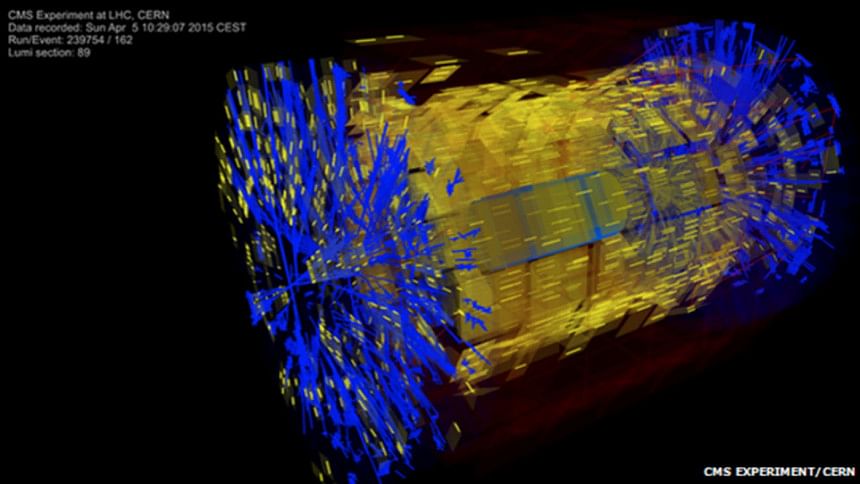LHC restart sees first collisions

The Large Hadron Collider has smashed protons together for the first time since early 2013.
The low-energy collisions, part of preparations for the next round of experiments, began on Tuesday morning.
Proton beams circled the LHC and collided at an energy of 450 gigaelectronvolts (GeV) per beam.
The aim for this second run of the LHC, following its planned two-year shutdown for repairs and improvements, is to stage collisions at 7,000 GeV per beam.
A key milestone was reached on Easter Sunday when proton beams once again did full circuits of the LHC's 27km subterranean circle.
Now the two beams have been steered into each other - another important step in the gradual restart of the world's biggest particle accelerator.
'Shopping list' of checks
According to the current schedule, collisions will first take place at those new, historic energies in the week commencing June 1st. Even those will only be used for calibration; "physics collisions" with usable results will start some time after that.
Excitement is building for physicists working at Cern - the European nuclear research campus near Geneva, Switzerland, which houses the LHC.
"These are the first colliding beams in the machine for over two years, and it brings home that physics collisions are close," said Prof Tara Shears from the University of Liverpool, who works on LHCb - one of four big experiments, spaced around the LHC's ring, where the collisions occur.
She said these early collisions are very valuable, even though they are only happening at injection energy, which means the LHC itself isn't adding any acceleration to the protons. They simply circulate and collide with the energy already delivered by the accelerators that feed protons into the main ring.

 For all latest news, follow The Daily Star's Google News channel.
For all latest news, follow The Daily Star's Google News channel. 



Comments